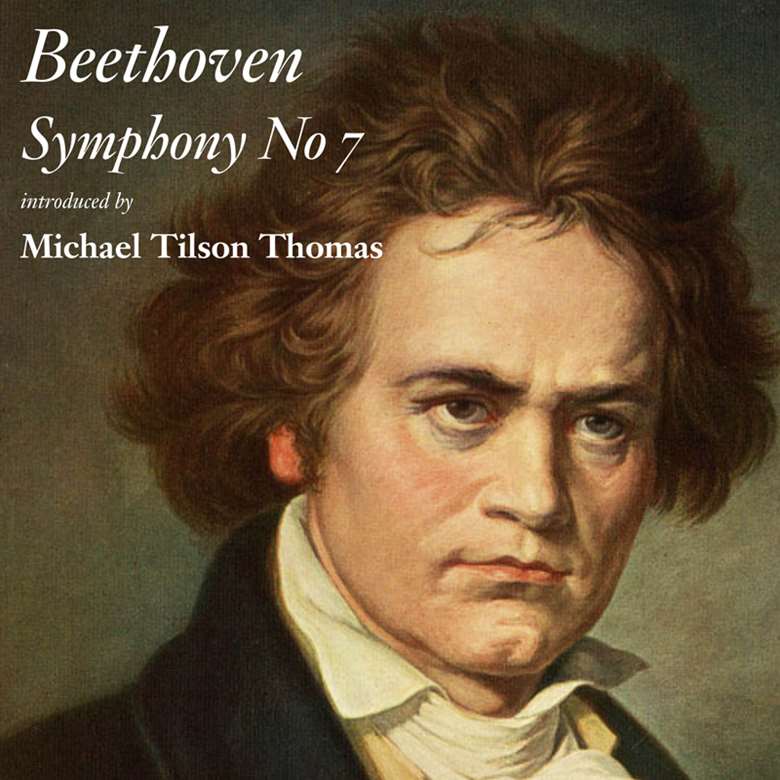Beethoven's Symphony No 7, introduced by Michael Tilson Thomas
Gramophone
Monday, October 27, 2014
San Francisco’s conductor on the symphony that is defined by its extraordinary rhythmic vitality

With all these symphonies, it’s worth reflecting upon the occasion for which they were written, in this instance, one of Beethoven’s ‘academies’. Beethoven’s previous attempt at an academy-style grand premiere – comprising the Fifth and Sixth Symphonies – was not a great success, but he was a clever promoter of his own music and preferred the idea of a public concert to an evening in an aristocratic ballroom. He wanted to give the public something amazing and knew how to create a furore. In the same programme as the Seventh, Wellington’s Victory gave the composer his most successful premiere, but the symphony, too, caused quite a stir and its second movement had to be encored.
The Seventh has more up-tempo music in it than any other Beethoven symphony, written for the smallest orchestra he had used in a while, without trombones and with only two horns. The opening positively proclaims that an extraordinary amount of this work will be in the key of A major. There is a certain tread, an underlying, procession-like pulse, to this first movement. It’s almost minimalist. The transition – the opening tune of the Allegro – is presented quietly, as a flute solo, with a rather bucolic accompaniment and a vaguely equestrian feel. It is also quite obsessive about one particular rhythmic motif: a dotted quaver followed by a semiquaver, followed by a quaver. The themes of the exposition are elided one over another; the normal stages of a sonata are not covered. In other Beethoven symphonies, the structure is usually quite clear: the first theme ends here and the second begins here. There might be a little transition, but it’s obvious where one theme ends and the next begins. Here, the themes are overlapped. In the development section, a slicing and dicing occurs with tiny bits of the main motif, in shifting keys and extremely different orchestrations. Ultimately, though, it all centres on a single harmonic place – using a ‘pedal point’, as Bach and especially Handel both do so effectively. Having wrapped you up completely in the excitement of all this, he comes to a sudden halt. There’s an oboe solo, then we make our way to the recapitulation. There is a droning, chromatic bass-line, with a little tune superimposed by the fiddles, with a motif of a perfect fourth, a charming arabesque. It starts gently, becomes more capricious and then, as the listeners drop their guard, it turns quite obsessional.
In the second movement we shift into A minor. The winds proclaim the harmony with a mono-motivic quality that makes a profound impression. This is like a march and the controversy is whether it should be played Allegretto or Andante con moto. It is still quite common for this to be played at a rather monumental tempo, with a strong accent at the beginning of each bar, but it’s quite clear from source materials that this is not what the composer intended. An early copyist made this mistake and we can see for ourselves Beethoven’s furious reaction. There are three very specific types of articulation set out, which describe a two-bar phrase. This music draws attention by means of understatement, including the use of echo phrases. We head through the string section, there is an almost organ-like, radiant moment in the winds, then a little fugue on the main motif. It ends just as it began. Things don’t get much more simple or perfect. I think this movement appeals because it is simple and expressive, like a perfect scene in an opera.
In the Scherzo in F major there is a slight element of hilarity, a quality of laughter. Chains of falling scales jump back, even higher; and all kinds of little games are being played. This movement is designed to confound you and surprise you, in a very nice way. The trio is a kind of pastoral drinking song. Everything in this symphony is very orchestral, but this is the most self-consciously virtuoso movement. The big decision is how to treat all the ‘hairpins’.
The finale has the highest energy of all. Beethoven uses a sforzando marking, almost mimicking a certain style of peasant fiddle playing. The main theme has obsessional repeats. It’s march-like, military and up-tempo. Two elements are interchanged – orchestration and some extreme excursions of key, even into C major. There is a big contrast between the extreme treble and the extreme bass. Even more than the others, this movement is designed, I believe, to demonstrate sheer physicality. The development section has fugitive keys and moments of delicacy, but then we return to the big fiddle tune, punctuated by extremely loud, periodic trumpet and drums fanfares. Again, there is obsessive, chromatic droning in the bass-line, as the violins and violas exchange, at a very extreme dynamic, the fragments of the fiddle tune. The overwhelming vitality draws an obvious parallel with the end of the opening movement. In his improvising days, which were pretty much over by this time, Beethoven would sometimes stupefy people, playing for an hour or more with incredible energy. I think, here, he is using the orchestra to create the same effect. Beethoven is not programmatic, but his music is always distinctive and recognisable; and always, somehow, he succeeds in examining some different part of us and our nature.
Interview by Michael McManus











